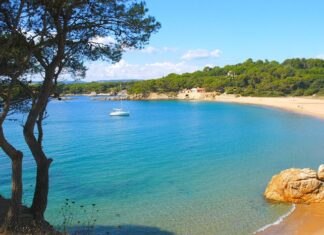The pattern Odoacer represents will be familiar by now. He is marked as a barbarian even though his success was entirely Roman. His father, Edeco, was a Hun; his mother, we are told, was most likely of Scirian ancestry. Scirians never amounted to much and their very name has a floating, variable meaning. So we are variously told that Odoacer was reared as a Scirian, as a Rugian, or as a Goth; that he had a brother or half brother who had a Thuringian father; and that he was brought up in the court of Attila the Hun. In other words, he was typical of the new Roman military aristocracy from the frontier. Born in about 433, he first appears in our sources in 463, at the head of a band of Saxons, fighting the Franks in far western Gaul, near modern Angers—as we have seen, part of the real wild west of the fifth-century empire. At this time and in this place, Odoacer fought on behalf of the Roman empire against a population now imagined to be external and barbarian. What is characteristically fifth century about this engagement, however, or characteristically “wild west,” is that he was next seen, probably quite shortly afterward, linked with the Frankish king Childeric attacking a force described as comprising Alamanni in Italy—though it is unlikely that the two of them actually got to Italy at that stage. More likely, their short-lived partnership began and ended in Gaul.
Around 469, we glimpse Odoacer again, this time just south of the Danube in modern Austria, the province then called Noricum. He has abandoned his Saxons and leads a small group off to seek their fortune. Short of stature and modestly dressed, he is still unquestionably the head.
Written two generations after
We have to be careful about this story, because it was written two generations after the fact, in a comfortable monastery at Naples in 511, at the height of the safety and complacency of Theoderic’s rule. The author was one of the most learned Christian scholars in Theoderic’s Italy, Eugippius, who compiled rules for managing monasteries, copied and corrected Augustine’s major works, and produced an anthology of Augustine’s writing that fills 1,000 pages in modern printings. This bookish man wrote the story of the wild, wild west we will now follow, and we need to bear his authorship in mind. Neapolitan readers were astonished to hear of the Danube freezing in winter so hard that carts could cross it and of how a bear came out of hibernation to lead good Christians to their destinations. The writer knew other books of the same kind, including the standard life of Saint Ambrose and the Dialogues of Sulpicius Severus, bursting with miracle stories of an earlier generation of Gaulish Christians private balkan tours.
Odoacer has only a walk-on part in this story, but despite that it’s the best personal picture we ever get of him. The hero is a mysterious stranger, Severinus, who rode out of the east, dressed in black, never quite coming clean about his past.30 He sometimes suggested that he had traveled far and faced much danger in eastern cities, and he attracted the honor and attention of the failed emperor Glycerius (r. 473-474), enough to make some wonder if he had been a soldier or a government official. His Latin, at any rate, was excellent.
Severinus arrived in Noricum in about 453; he died there in 482 with the words of Psalm 150 on his lips: “Praise the lord in his saints, let every spirit praise the lord.” This one holy man filled up a lot of map, according to his biographer, traveling the Danube from Vienna west, up the river Inn to Salzburg, and sending his reputation in his lifetime as far afield as Milan. His asceticism and life of prayer attracted attention, for he ate only once a day (during Lent, once a week) and was ever at prayer in or out of church.
Read More about Sidonius tells the story of a brave Roman war








